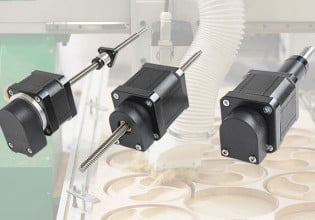Utilizing PLM Software With ERP and MES
This article explores the different ways in which PLM applications can be integrated with enterprise resource planning (ERP) and manufacturing execution systems (MES).
Part 3 of a PLM series - be sure to check out the previous articles: Introduction to PLM and PLM Software.
Product lifecycle management (PLM) applications are multidisciplinary, requiring data inputs from and output to different areas of a business. Among those, the ones primarily involved are product design and management, manufacturing process, and system engineering. These areas are also key elements of enterprise resource planning (ERP) and manufacturing execution system (MES) applications, and often warehouse management systems (WMS). Because of these shared areas, there is a significant level of valuable integration among all these applications.

Figure. 1. PLM and ERP are two complementary systems that can be integrated. Image used courtesy of Xavor
Related Software Review
Let’s first review and describe PLM, ERP, MES, and WMS systems.
-
Product Lifecycle Management (PLM) System
A PLM system is a highly customizable application consisting of several different tools that help manage a product throughout its entire life cycle. It includes Bill of Materials (BOM) management, change management, quality management, and, more notably, CAD-based, and other kinds of graphical representations of products and interactive simulations. A PLM system also encourages collaboration by employing central file repositories with file versioning and access controls.
-
Enterprise Resource Planning (ERP) System
An ERP system is a multi-layered software application with accompanying hardware architecture that helps manage and integrate multiple areas of a business, such as manufacturing, sales, finances, accounting, supply chain management, inventory management, among others. ERP systems increase the visibility of these business processes, count on data analytics tools to aid in strategic decision making, and permit collaboration across multiple departments.
-
Manufacturing Execution System (MES)
An MES system focuses on manufacturing operations and has a more limited scope than an ERP system. In most scenarios, although the MES is a standalone application, it normally places below the ERP in terms of hierarchy. On the other hand, MES systems are capable of integrating with production control systems, thus providing the link between the data originated at the floor level automation and the ERP system.
-
Warehouse Management System (WMS)
A WMS system is hierarchically at the same level as an MES system. The WMS is dedicated to the warehousing and logistics areas of a business. A WMS can help manage most warehousing processes, such as material inbound, storage, inventory control, and shipments.
The Purdue-Model-based pyramid below best describes the relationship between these four applications, together with others in the manufacturing industry. The Purdue Enterprise Reference Architecture (PERA) is a model used as a reference in modern computer-based manufacturing businesses.

Figure 2. PLM and ERP systems are one category above MES and WMS systems. Image used courtesy of MESCenter
PLM and ERP Working Together
PLM and ERP are two complementary types of systems that are designed to be interconnected. Also, WMS and MES systems are important here because they are the link between PLM and ERP and floor-level devices and automation. As was described in the previous section, both PLM and ERP systems cover multiple business areas, and while there might be some overlap, the important difference is in what each system emphasizes.
Bills of materials (BOMs) are key elements that best exemplify the relationships between PLM and ERP. On one hand, BOMs are managed in a PLM system in a way that produces historical records that help trace product changes throughout the whole lifecycle. On the other hand, the same BOM can be used in an ERP system to execute production orders. Although changes to a BOM could be made from within the ERP, these changes have a more practical purpose and must be documented in the PLM system.
PLM – ERP integration is beneficial because it helps make the product design process more efficient by granting access to almost real-time data from the production environment. Improving product design efficiency, in turn, brings cost savings because potential errors and defects are more likely to get detected (and resolved) in advance before they reach actual production where re-tooling and process changes are very costly.

Figure 3. ERP systems directly affect PLM by integration with the Bills of Materials. Image used courtesy of Cyber Chasse
The logical sequence indicates that it would be more valuable to implement a PLM system before an ERP. The product is first designed within PLM before the product specifications are released for production under an ERP system. While this is accurate, modern systems, and particularly greenfield installations, benefit from implementing both systems at the same time, creating a more iterative process between the two with inputs from all business segments.
Regarding the other two systems, WMS and MES, these two platforms are normally highly integrated with the ERP. The MES operates in the manufacturing area, while the WMS is in the intralogistics, and both areas are frequently located within the same building. Highly automated manufacturing environments that employ these applications produce large amounts of data regarding the products and the processes. Meaningful portions of this data are passed to the ERP to make strategic decisions about the business. When the PLM application is also present, the scope of the data that is passed to the ERP can be expanded to include information that is relevant to the PLM process. Outputs from the PLM process can be sent to the ERP in the form of product or process changes. The ERP, in turn, can facilitate cascading down these updates to the WMS and MES.
Summary
All manufacturing businesses realize the importance of tracking product revisions and relating such information between departments. The scale of software to manage the revisions and communications can be overwhelming, but a careful study of the scope and purpose of each software, and how each interacts with the others, is a critical step in successfully building a system to manage product lifecycles.






